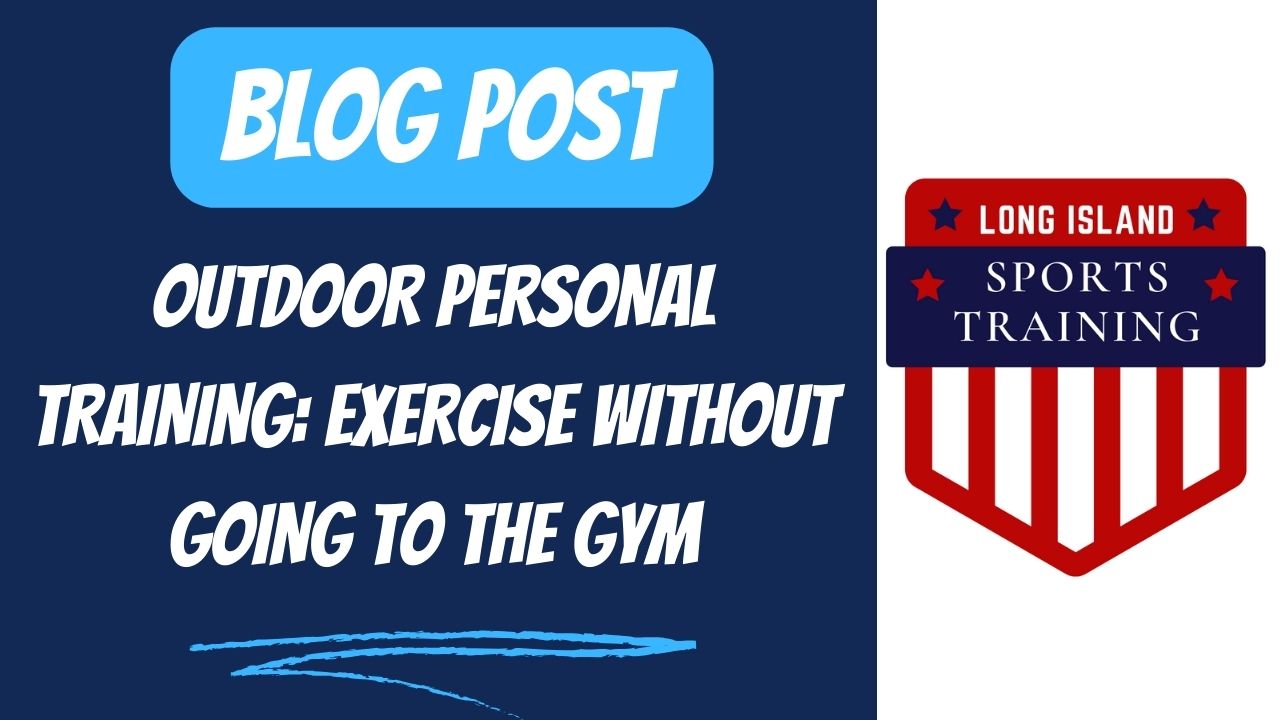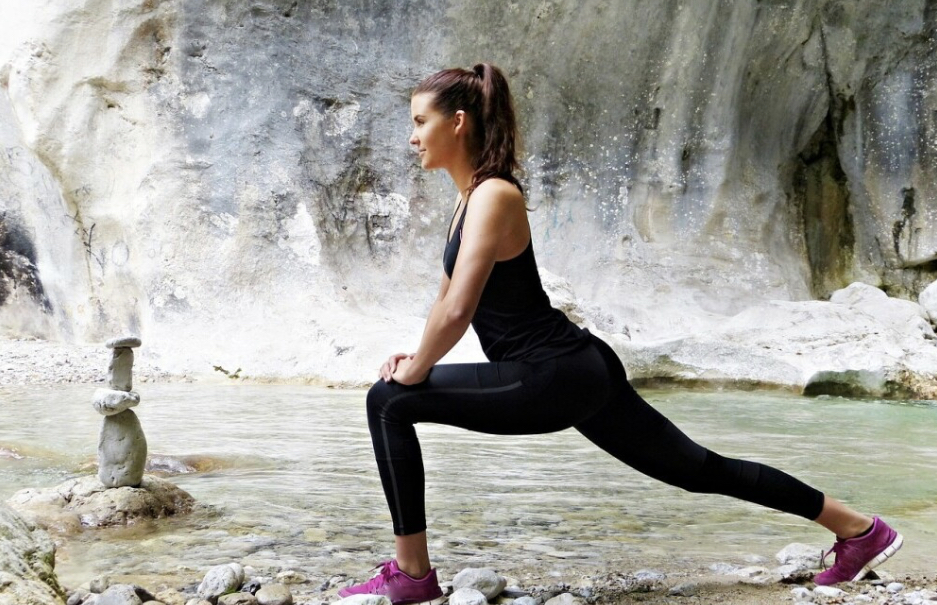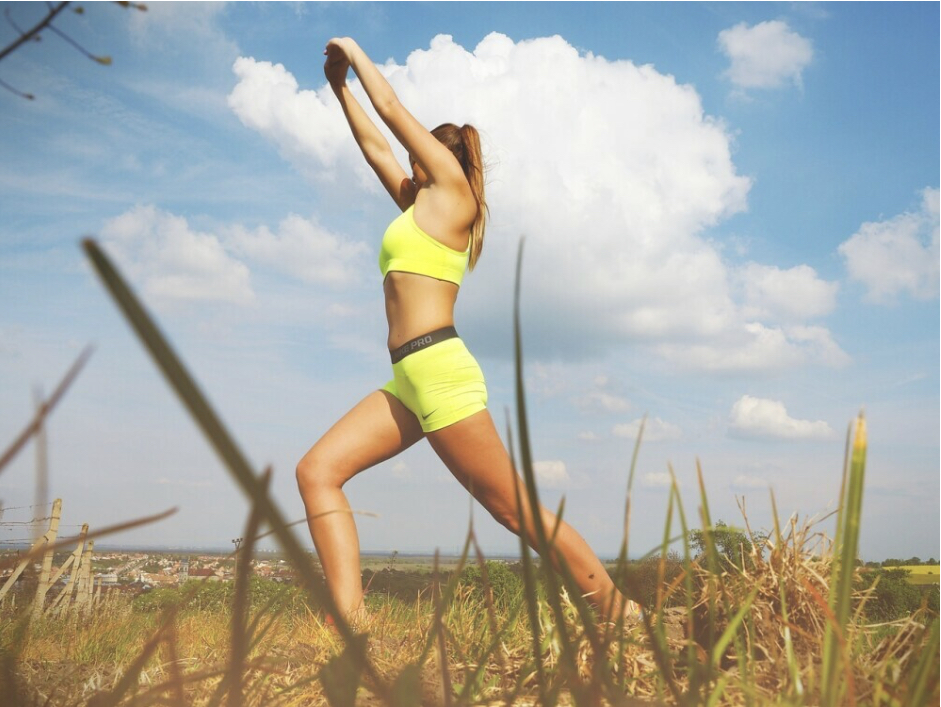Outdoor Personal Training: Exercise Without Going To The Gym
 Outdoor Personal Training: Exercise Without Going To The Gym
Outdoor Personal Training: Exercise Without Going To The Gym
In this blog, Outdoor Personal Training: Exercise Without Going To The Gym, we embark on a journey through the open spaces, parks and natural landscapes that serve as the backdrop for a new era in personal fitness. Say goodbye to the monotony of indoor exercise routines and discover the invigorating world of outdoor training – where every session is an adventure, and each step is taken beneath the vast, open sky.
In a world dominated by fluorescent lights and clinking weights, the allure of the great outdoors beckons those seeking a refreshing alternative to the traditional gym setting. Outdoor Personal Training transcends the confines of four walls, inviting you to breathe in the crisp air, feel the sun on your skin and redefine your workout experience.
Join us as we explore the myriad benefits, customizable workouts and the liberating sense of freedom that Outdoor Personal Training brings to fitness workouts. So, let’s step outside the gym and embrace a holistic approach to health and well-being amid the beauty of nature.
Ways Outdoor Personal Training Beats Going To The Gym

In a world dominated by gym memberships and indoor workouts, there’s a breath of fresh air – quite literally – waiting for those willing to step outside the conventional fitness box.
Outdoor personal training has emerged as a dynamic and invigorating alternative, allowing fitness enthusiasts to break free from the confines of the gym and embrace nature as their training ground.
- Fresh Air and Vitamin D: Outdoor personal training provides a breath of fresh air, allowing you to soak in natural sunlight and boost your vitamin D levels. Exposure to sunlight is essential for mood enhancement, immune system support, and overall well-being.
- Variety in Workouts: The outdoor environment offers a diverse range of terrains and structures, facilitating varied workouts. From hill sprints to trail running and bodyweight exercises in the park, outdoor training introduces a dynamic element that keeps your workouts engaging and effective.
- Mental Well-being: Nature has a calming effect on the mind. Outdoor personal training allows you to escape the hustle and bustle of indoor environments, reducing stress and promoting mental clarity. The connection with nature during workouts has been linked to improved mood and reduced symptoms of anxiety and depression.
- Increased Motivation: The ever-changing outdoor scenery and the openness of nature can inspire and motivate individuals. Breaking away from the monotony of indoor spaces can reignite enthusiasm for exercise, making it more likely for individuals to stick to their fitness routines.
- Boosted Energy Levels: Exercising outdoors is associated with increased energy levels. The combination of physical activity and exposure to natural elements stimulates the body and mind, leaving you feeling invigorated and ready to tackle daily challenges.
- Cost-Effective and Accessible: Outdoor spaces are generally more accessible than gyms, and many outdoor personal training sessions require minimal or no equipment. This accessibility makes outdoor training a cost-effective option, removing financial barriers that may hinder people from pursuing fitness goals.
- Customized Training Environments: Personal trainers can tailor workouts to leverage the natural features of outdoor spaces. Whether it’s using benches for step-ups, incorporating tree branches for suspension training, or utilizing open fields for agility drills, the environment becomes an integral part of the training program.
- Social Connection: Outdoor personal training can be a social experience, allowing individuals to connect with others who share a passion for fitness. Group workouts in parks or on trails foster a sense of community, providing a supportive environment for achieving fitness goals.
- Improved Balance and Coordination: Uneven surfaces and varied terrains outdoors challenge your balance and coordination more than the controlled environment of a gym. This can lead to improved stability and a greater ability to navigate different physical challenges.
- Adaptable to All Fitness Levels: Whether you’re a beginner or an experienced fitness enthusiast, outdoor personal training is adaptable to all fitness levels. Trainers can modify exercises and intensity based on individual capabilities, ensuring a safe and effective workout for everyone.
Incorporating outdoor personal training into your fitness routine not only enhances physical health but also contributes to a holistic well-being by addressing mental, social and environmental aspects of a healthy lifestyle.
Why Outdoor Personal Training In The Sun Is Better Than Going To The Gym
Outdoor personal training in the sun offers several advantages over traditional gym workouts, providing a unique and holistic fitness experience:
- Natural Vitamin D: Exposure to sunlight during outdoor training allows your body to naturally produce vitamin D. Vitamin D is crucial for bone health, immune function, and overall well-being. Many people have vitamin D deficiencies, and outdoor training provides a natural solution.
- Mood Enhancement: Sunlight triggers the release of serotonin, often referred to as the “feel-good” hormone. This can contribute to an improved mood, reduced stress levels, and an overall sense of well-being during and after outdoor workouts.
- Fresh Air: Outdoor training exposes you to fresh air, which is often lacking in the controlled environment of a gym. Breathing in fresh air can increase oxygen levels in your body, leading to improved lung capacity and a sense of rejuvenation.
- Increased Energy Levels: Sunlight is a natural energizer. Exercising outdoors in the sun can boost your energy levels and combat feelings of fatigue. The combination of physical activity and sunlight can leave you feeling more invigorated compared to indoor workouts.
- Variety and Creativity: The outdoor environment offers a wide range of possibilities for workouts. You can incorporate natural elements like hills, stairs, and open spaces, adding variety to your exercise routine. This variety not only keeps workouts interesting but also challenges different muscle groups.
- Connection with Nature: Being outdoors allows you to connect with nature, fostering a sense of tranquility and mindfulness. This connection can contribute to stress reduction and an overall sense of happiness, making your workout a more enjoyable experience.
- Adaptability: Outdoor training is adaptable to different fitness levels and preferences. Whether you prefer jogging on a trail, doing bodyweight exercises in a park, or practicing yoga in the sunshine, outdoor settings provide versatile options that cater to individual needs.
- Cost-Effective: Outdoor training typically requires minimal or no equipment, reducing the financial burden associated with gym memberships or home gym setups. It’s a cost-effective way to stay fit while enjoying the natural surroundings.
- Social Interaction: Exercising outdoors often creates opportunities for social interaction. Whether you join a group fitness class in the park or meet fellow outdoor enthusiasts on a trail, the social aspect can enhance motivation and create a supportive fitness community.
- Flexibility and Freedom: Outdoor personal training offers the freedom to choose where and how you want to exercise. You’re not confined to the operating hours or equipment limitations of a gym. This flexibility allows you to tailor your workouts to your preferences and schedule.
While both outdoor and gym workouts have their merits, outdoor personal training in the sun provides a unique blend of physical, mental and environmental benefits that can contribute to a more well-rounded and enjoyable fitness experience.
Why Outside Personal Training Is More Cost Effective Then Going To The Gym

Outdoor personal training tends to be more cost-effective than gym memberships for several reasons:
- No Gym Membership Fees: Outdoor personal training doesn’t require a gym membership, eliminating the associated monthly or annual fees. This is a significant cost-saving factor, especially for individuals who may find traditional gym memberships financially burdensome.
- Minimal Equipment Costs: Many outdoor workouts rely on bodyweight exercises and the natural environment, reducing the need for expensive gym equipment. This simplicity makes outdoor training accessible to a broader range of individuals without the need for substantial upfront investments in fitness gear.
- No Additional Facility Costs: Gyms often charge extra fees for access to certain facilities, classes, or amenities. Outdoor personal training utilizes public spaces like parks and trails, where these additional costs are nonexistent. It leverages freely available resources, making it a more budget-friendly option.
- Flexibility in Training Locations: Outdoor personal training doesn’t tie you to a specific gym location. Trainers can adapt workouts to various outdoor settings, providing flexibility and the ability to choose cost-free locations like local parks or open fields.
- Reduced Transportation Costs: Going to the gym may involve commuting, which adds to the overall cost. Outdoor personal training allows you to exercise in nearby parks or open spaces, reducing or eliminating the need for transportation costs associated with traveling to a gym.
- No Hidden Fees: Gyms may have hidden costs, such as initiation fees, maintenance fees, or locker rental charges. Outdoor personal training typically operates without these hidden fees, offering a more transparent and straightforward pricing structure.
- Lower Overhead Costs for Trainers: Outdoor personal trainers often have lower overhead costs compared to those working in gyms. They don’t need to cover the expenses associated with maintaining a gym facility, allowing them to offer more competitive rates for their training services.
- Affordability for All Fitness Levels: The cost-effectiveness of outdoor personal training makes fitness more accessible to a broader audience. Individuals who might be deterred by the expenses associated with traditional gyms can opt for outdoor training without compromising on the quality of personalized guidance.
- No Long-Term Commitments: Many gyms require long-term commitments or contracts, which can be financially constraining. Outdoor personal training often allows for more flexible arrangements, enabling individuals to pay for sessions as needed without being tied to extended contracts.
- Customization Without Extra Costs: Outdoor personal trainers can tailor workouts to individuals without the need for specialized equipment. This customization is often included in the overall training package, eliminating additional costs associated with personalized programs in some gym settings.
In summary, outdoor personal training is cost-effective due to its elimination of gym membership fees, minimal equipment requirements, flexibility in training locations, and the absence of hidden costs associated with traditional gyms. It offers a financially accessible and attractive alternative for individuals seeking personalized fitness guidance.
What Are Some Of The Best Outdoor Training Exercises A Person Can Do
There are numerous effective outdoor exercises that individuals can incorporate into their personal training routine without the need for gym equipment.
Here are some examples:
- Running or Jogging: Utilize local trails, parks, or open spaces for cardiovascular workouts. Interval training, like sprinting and jogging intervals, can add variety.
- Bodyweight Exercises:
-
- Push-Ups: Targeting the chest, shoulders, and triceps.
-
- Squats: Engaging the lower body, including the quads, hamstrings, and glutes.
-
- Lunges: Working on leg strength and stability.
-
- Planks: Core-strengthening exercise to target abs and back muscles.
- Trail or Hill Sprints: Incorporate short bursts of high-intensity running uphill to challenge your cardiovascular system and lower body muscles.
-
- Jumping Jacks: Full-body exercise for cardiovascular fitness.
-
- Box Jumps: Use a sturdy bench or step for explosive lower body power.
- Agility Drills: Set up cones or markers for agility exercises like ladder drills, side shuffles, or cone drills to enhance coordination and speed.
- Stair Workouts: Find a set of stairs for exercises like stair climbing, step-ups, or stair sprints to target the lower body.
- Yoga or Pilates: Take advantage of open spaces for flexibility and bodyweight strength exercises. Yoga poses and Pilates movements can improve balance, flexibility, and core strength.
- Outdoor Calisthenics:
-
- Pull-Ups: Find a sturdy horizontal bar, like a playground structure.
-
- Dips: Use parallel bars, benches, or sturdy surfaces.
- Cycling: Ride a bike on trails or designated cycling paths for a low-impact cardiovascular workout.
- Kayaking or Paddle boarding: If you have access to water, these activities provide an excellent full-body workout.
- Tree or Bar Exercises:
-
- Inverted Rows: Use a horizontal bar or sturdy tree branch.
-
- Hanging Leg Raises: Engage your core by hanging from a bar.
- Resistance Band Exercises: Portable and versatile, resistance bands can be used for various strength training exercises, such as band pulls, rows, and leg exercises.
- Throwing and Catching: Engage in activities like throwing a frisbee or playing catch with a ball to improve hand-eye coordination and upper body strength.
- Nature Walks or Hikes: Take advantage of nature trails for brisk walks or hikes, incorporating inclines for added challenge.
- Mountain Climbers: Engage your core and elevate your heart rate with mountain climbers. Assume a plank position and alternately bring your knees towards your chest in a running motion.
- Bench or Log Workouts: Utilize benches or logs for exercises like step-ups, incline push-ups, and tricep dips. These simple props can add variety to your routine.
- Sand Workouts: If you’re near a beach or have access to a sandy area, try exercises like sand sprints, burpees, or even sandbag workouts. The instability of sand adds an extra challenge to your movements.
- Rock Lifting: Incorporate rocks of varying sizes for resistance training. This can include bicep curls, overhead presses, or even squats while holding a sturdy rock.
- Balance Exercises: Perform exercises that challenge your balance, such as single-leg stands, walking lunges with a twist, or stability exercises on uneven surfaces like tree roots or rocks.
- Outdoor Circuit Training: Create a circuit with a combination of exercises, moving from one to the next with minimal rest. For example, combine squats, push-ups, jumping jacks and planks into a full-body circuit.
These exercises offer a diverse range of movements to target various muscle groups, enhance cardiovascular fitness and add an element of fun to your outdoor workouts.
Conclusion
In conclusion, Outdoor Personal Training stands as a fitness innovation, inviting individuals to break free from the conventional gym routine and immerse themselves in the invigorating embrace of nature. Additionally, there are a manifold benefits – from the natural infusion of Vitamin D and mood-enhancing sunlight to the flexibility, variety and adaptability that outdoor environments offer.
The cost-effectiveness of this approach opens doors for everyone, removing financial barriers and providing an inclusive platform for individuals of all fitness levels. Through an array of exercises spanning from trail sprints and bodyweight workouts to yoga in the park, Outdoor Personal Training offers a dynamic, customizable and enjoyable fitness experience.
Furthermore, the liberation from the gym’s four walls extends beyond the physical, fostering mental well-being through reduced stress levels and a connection with nature.
Let’s Talk: Contact Tim @ Long Island Sports Training
If you are looking for local sports or fitness training sessions to help you reach peak performance contact us:
Web Page:
https://longislandsportstraining.com/services/
Phone:
631-594-4048
Email:
Tim@LongIslandSportsTraining.Com
